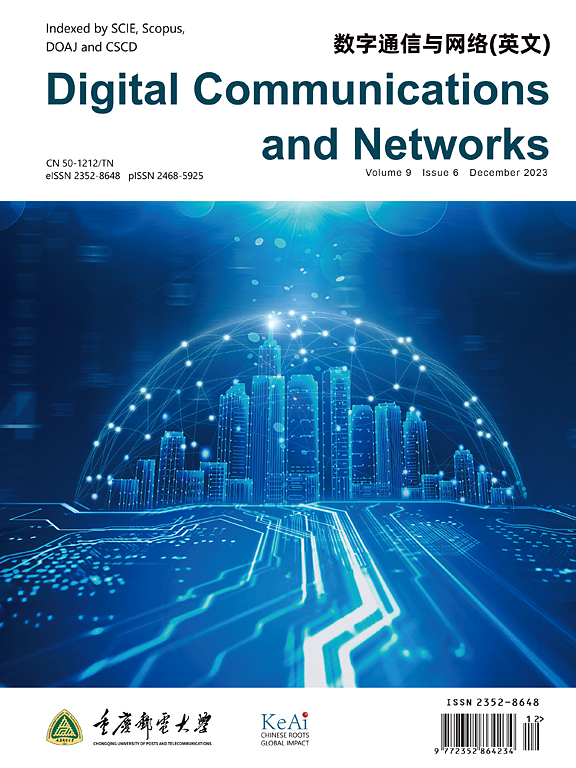Multi-class Bitcoin mixing service identification based on graph classification
IF 7.5
2区 计算机科学
Q1 TELECOMMUNICATIONS
引用次数: 0
Abstract
Due to its anonymity and decentralization, Bitcoin has long been a haven for various illegal activities. Cyber-criminals generally legalize illicit funds by Bitcoin mixing services. Therefore, it is critical to investigate the mixing services in cryptocurrency anti-money laundering. Existing studies treat different mixing services as a class of suspicious Bitcoin entities. Furthermore, they are limited by relying on expert experience or needing to deal with large-scale networks. So far, multi-class mixing service identification has not been explored yet. It is challenging since mixing services share a similar procedure, presenting no sharp distinctions. However, mixing service identification facilitates the healthy development of Bitcoin, supports financial forensics for cryptocurrency regulation and legislation, and provides technical means for fine-grained blockchain supervision. This paper aims to achieve multi-class Bitcoin Mixing Service Identification with a Graph Classification (BMSI-GC) model. First, BMSI-GC constructs 2-hop ego networks (2-egonets) of mixing services based on their historical transactions. Second, it applies graph2vec, a graph classification model mainly used to calculate the similarity between graphs, to automatically extract address features from the constructed 2-egonets. Finally, it trains a multilayer perceptron classifier to perform classification based on the extracted features. BMSI-GC is flexible without handling the full-size network and handcrafting address features. Moreover, the differences in transaction patterns of mixing services reflected in the 2-egonets provide adequate information for identification. Our experimental study demonstrates that BMSI-GC performs excellently in multi-class Bitcoin mixing service identification, achieving an average identification F1-score of 95.08%.
基于图分类的多类比特币混合服务识别
由于其匿名性和去中心化,比特币长期以来一直是各种非法活动的避风港。网络犯罪分子通常通过比特币混合服务使非法资金合法化。因此,研究加密货币反洗钱中的混合服务是至关重要的。现有的研究将不同的混合服务视为一类可疑的比特币实体。此外,它们还受到依赖专家经验或需要处理大规模网络的限制。到目前为止,还没有对多类混合服务的识别进行探索。这是具有挑战性的,因为混合服务共享相似的过程,没有明显的区别。然而,混合服务识别有利于比特币的健康发展,为加密货币监管和立法提供金融取证支持,为细粒度区块链监管提供技术手段。本文旨在利用图分类(bsi - gc)模型实现多类比特币混合服务识别。首先,BMSI-GC基于历史事务构建混合服务的2跳自我网络(2-egonet)。其次,应用graph2vec(主要用于计算图间相似度的图分类模型)从构建的2-egonet中自动提取地址特征;最后,训练多层感知器分类器根据提取的特征进行分类。BMSI-GC是灵活的,不需要处理全尺寸的网络和手工制作地址特性。此外,2-egonet中反映的混合服务交易模式的差异为识别提供了足够的信息。我们的实验研究表明,BMSI-GC在多类别比特币混合服务识别中表现优异,平均识别f1得分为95.08%。
本文章由计算机程序翻译,如有差异,请以英文原文为准。
求助全文
约1分钟内获得全文
求助全文
来源期刊

Digital Communications and Networks
Computer Science-Hardware and Architecture
CiteScore
12.80
自引率
5.10%
发文量
915
审稿时长
30 weeks
期刊介绍:
Digital Communications and Networks is a prestigious journal that emphasizes on communication systems and networks. We publish only top-notch original articles and authoritative reviews, which undergo rigorous peer-review. We are proud to announce that all our articles are fully Open Access and can be accessed on ScienceDirect. Our journal is recognized and indexed by eminent databases such as the Science Citation Index Expanded (SCIE) and Scopus.
In addition to regular articles, we may also consider exceptional conference papers that have been significantly expanded. Furthermore, we periodically release special issues that focus on specific aspects of the field.
In conclusion, Digital Communications and Networks is a leading journal that guarantees exceptional quality and accessibility for researchers and scholars in the field of communication systems and networks.
 求助内容:
求助内容: 应助结果提醒方式:
应助结果提醒方式:


